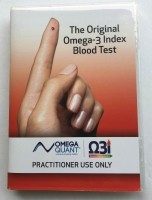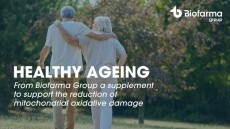Better omega-3s test will help improve public health outcomes, developer says
This content item was originally published on www.nutraingredients-usa.com, a William Reed online publication.
Bill Harris, PhD, is a professor at the University of South Dakota and is also the CEO of Omega Quant, a testing firm that developed the new test kit. Harris spoke with NutraIngredients-USA at the recent SupplySide West trade show in Las Vegas, NV about how the test can potentially improve public health outcomes across the globe.
An idea born of beer
Harris said the idea for a test of omega-3 levels came from research that was presented a number of years ago at a medical conference. The researchers had compared omega-3 levels with risk of cardiovascular disease.
“The studies came to the conclusion that the people who had the highest levels of omega-3, the highest of what we came to call the Omega-3 Index, were at about 90% less risk of sudden cardiac death than were the people with lower omega-3 levels,” Harris said.
“A colleague of mine from Germany and I were talking over a beer after the presentation and we said, this ought to be a test. We didn’t name it the Omega-3 Index over that beer, but that’s what we named it later. It is not a measurement of how much omega-3s you eat; it is an actual risk factor,” he said.
Easier testing
Omega Quant has come up with a clean and painless way to collect the blood samples needed for the test. Prior methods required vials of blood to be drawn by a phlebotomist, and then having the blood properly packed and shipped, putting it out of the reach for a consumer. Now the test requires just a finger prick and a dried blood spot on a card that can be sent in an envelope. The test measures omega-3s as a percentage of total fatty acids in the red blood cells.
Harris said the data his company has gathered and other data sets from around the globe show some striking patterns. The areas with the highest Omega-3 Index measurements across the population are areas with high fish consumption like Japan and Korea. Most of Europe and the United States generally show low levels, and China measures low on this scale, too.
“We think people ought to be at a level at 8%, in other words 8% of the fatty acids in the red blood cells ought to be omega-3s. The average american is at 4% to 5%. In Japan and Korea the levels are high, up at 9% or 10%. But most of the world is gray on this map; we don’t have good data,” he said.
How much is needed?
The Institutes of Medicine has not established a recommended intake level for omega-3s, but the Global Organization of EPA and DHA Omega-3s (GOED), has gathered research and recommendations from health authorities around the world and has come up with a benchmark of 500mg combined EPA and DHA per day per adult. But Harris believes that is far too low to really move the needle in terms of this risk factor. He said boosting individual consumers’ Omega-3 Index could be just as important as managing other ‘silent’ risk factors, such as high blood pressure.
“From the data we’ve got from dose response studies we’ve done, it’s going to take about 1.5 gram of EPA and DHA combined to get them up to that 8% level,” he said.
“It’s much like vitamin D testing, you can’t feel a low omega-3 level. You can’t feel high cholesterol. Without some test you can’t know if you need to take omega-3s. Even people who say they eat a lot of fish, they may be eating fried catfish and shrimp, which have very low omega-3s,” Harris said.
















